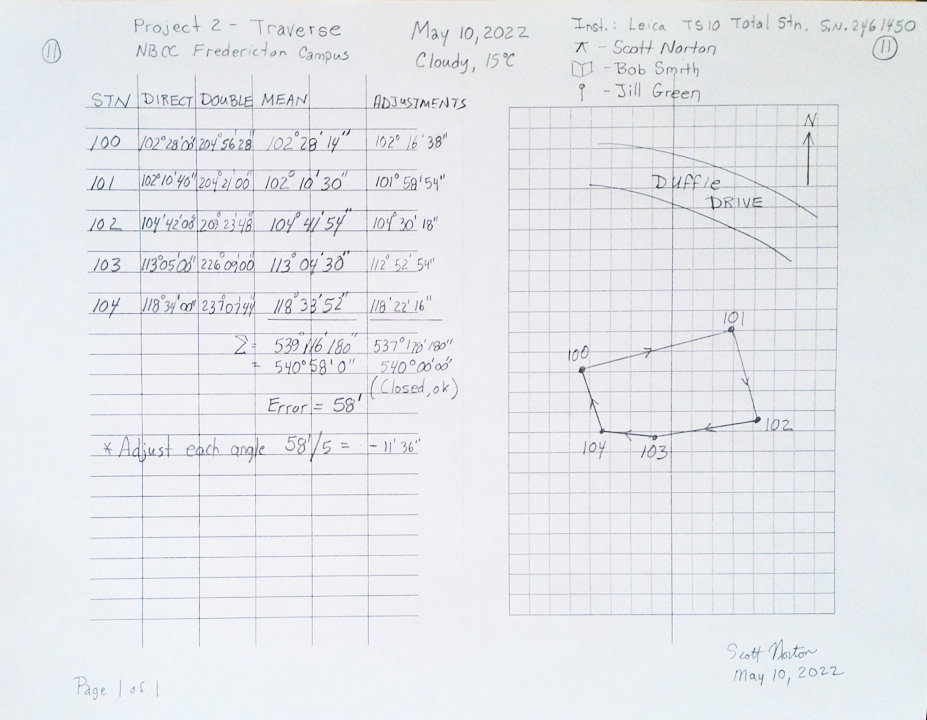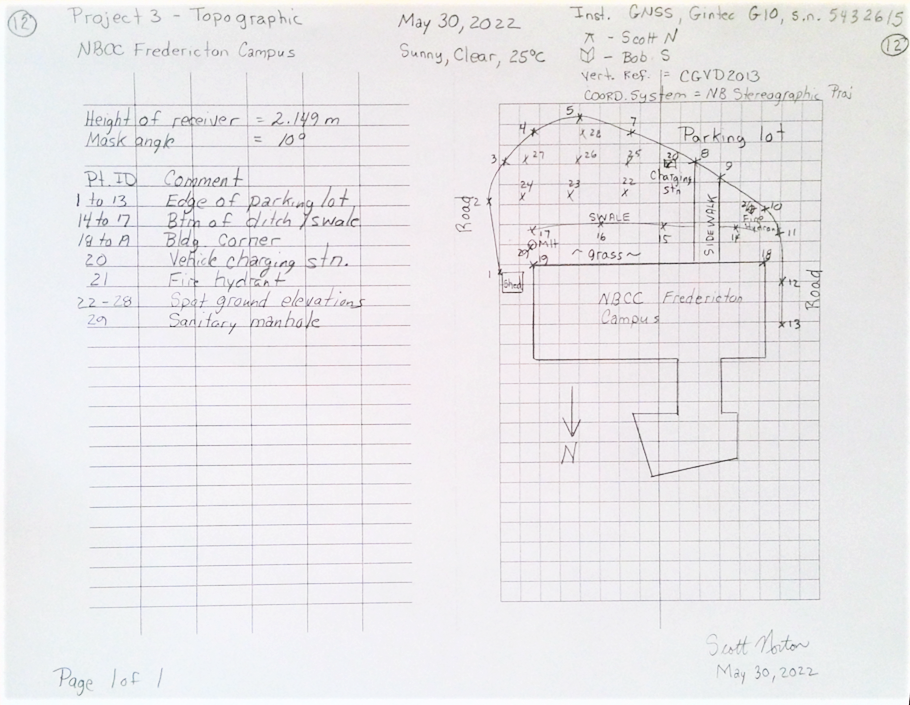7 Surveying Field Notes
Scott Norton
Learning Objectives
By the end of this chapter, you should be able to:
- Create integrated sketch and notebook entries
Surveying is a field where surveyors need excellent observation and measurement skills (Chapter 1). Surveyors use a variety of measuring devices to capture distances, angles, and positions on or near the surface of the earth.
While many of these measuring devices can collect and store data electronically in field data collectors, hand-written field notes are still needed to better understand and interpret the collected data. Good field notes are neat, legible, organized, and complete without redundancies providing necessary extra information not electronically collected in the field.
Field notes are written in a survey field book. The field book generally includes a title page and a table of contents at the beginning.
The form and format of surveying field notes will vary depending on the type of survey completed; however, the notes often include such things as:
- Job/Project name
- Date and possibly the time of day
- Weather
- A list of survey crew members (who performed the survey)
- Instruments used (type and identification numbers)
- Description of key points (reference monuments, key occupied points, etc.)
- Sketches (placed on the right side of a field notebook sheet)
Contents of Surveying Field Note sketches:
- Location of key items such as buildings, roadways, water bodies, large trees, existing infrastructure, monuments, etc.
- Orientation (e.g., include a north direction arrow)
- Direction of survey
- Profiles and elevations of topography
- Routes (roadways and paths) with stationing numbers
- Sizes and dimensions of key objects
- Other relevant information that could be useful to better interpret the collected data and/or provide necessary information for designers who will use the field data and notes
Note: Field note sketches are not drawn accurately to scale, though they should at least be roughly to scale.
Guidelines for Survey Field Notes and Sketches
- Recorded in pencil
- Neatly printed
- Measurements recorded as/when taken
- Perform math checks and quality calculations while in the field to identify computational errors and/or measurement errors
- Sketches should use straightedges for all line work
- Include a north arrow (often pointing up) to orientate the sketch
- Do not overcrowd the notes and sketches
- Do not erase mistakes – strike out with a single line and write the correction above
- If there are many errors, void the whole page by crossing out
- Never tear out the page
Note: surveying field notes written in pencil are typically allowed to be submitted as legal evidence in a court. Therefore, erasing is not recommended, because it could affect the credibility of the field notes.
- Mistakes in other (non-measured) entries (descriptions, calculations, etc.) may be erased and reentered
- Lettering and text on sketches should be read left-to-right
Example Survey Field Notes
The type of survey will dictate the necessary information to measure and record. The following figures provide field note examples of three common survey types.



Self Test
![]() Now complete the Learning Task Self-Test.
Now complete the Learning Task Self-Test.
![]() Key Takeaways
Key Takeaways
- The surveyor’s field book is a special application of the Engineering Notebook, and entries share many of the same characteristics as engineering notebook entries.
- Incorrect measurements and calculations written in field notes are not erased; they are crossed out and re-written.
- Surveying field notes are admissible in court as evidence.

